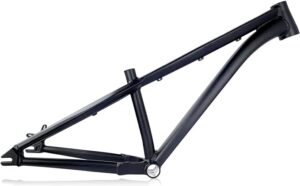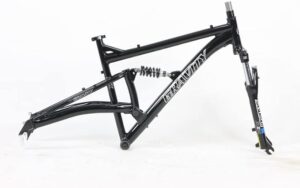Finding the correct seat height for your bike is crucial for comfort, efficiency, and injury prevention. Whether you are a seasoned cyclist or a beginner, understanding how to adjust your seat height properly can make a significant difference in your overall cycling experience.
Why Seat Height Matters
The seat height on your bike affects various aspects of your ride. An incorrect seat height can lead to discomfort and pain, particularly in your knees, hips, and lower back. A properly adjusted seat height helps you maintain a comfortable riding position, reducing the risk of soreness and fatigue.
Cycling is all about energy efficiency. When your seat height is correctly adjusted, you can maximize your pedaling power and maintain a smoother cadence. This efficiency can make your rides more enjoyable and help you cover longer distances with less effort.
Riding with an improper seat height can increase the risk of injuries. For example, a seat that is too high can cause overextension of the knees, while a seat that is too low can lead to excessive knee flexion. Both scenarios can result in strain and long-term damage. The right seat height ensures that you have proper control over your bike. It allows you to maintain a stable riding position and react quickly to changes in terrain or traffic conditions.
Determining the Right Seat Height
There are several methods to determine the correct seat height for your bike. One of the simplest ways to find the right seat height is the heel method. Place your bike on a level surface and secure it so it doesn’t move. Sit on the saddle and place your heel on the pedal at its lowest position (6 o’clock). Adjust the seat height so that your leg is fully extended with your heel on the pedal. When you pedal with the ball of your foot, your knee should have a slight bend of about 25-30 degrees.
The inseam method uses your inseam measurement to calculate the ideal seat height. Measure your inseam by standing with your feet about 6 inches apart and using a book or ruler to simulate a bike seat. Measure from the ground to the top of the book or ruler. Multiply your inseam measurement by 0.883. The resulting number is the approximate distance from the center of the bottom bracket to the top of the saddle.
For the most accurate and personalized seat height adjustment, consider getting a professional bike fit. A trained fitter will analyze your body mechanics, flexibility, and riding style to determine the optimal seat height and other adjustments. While this option can be more expensive, it provides a tailored fit that can enhance your overall cycling experience.
Tips for Adjusting Seat Height
Once you’ve determined the right seat height, use a torque wrench to ensure that you don’t over-tighten or under-tighten the seat post clamp. Over-tightening can damage the seat post or frame, while under-tightening can lead to slippage during your ride.
It’s important to make small adjustments and test them out before making further changes. Raise or lower the seat by a few millimeters at a time and go for a short ride to see how it feels. Gradual adjustments help you find the perfect height without overshooting the mark.
When testing your seat height, pay attention to your riding position. Your hips should remain level without rocking from side to side. Your knees should have a slight bend at the bottom of the pedal stroke, and you should be able to pedal smoothly and efficiently.
In addition to seat height, saddle tilt can affect your comfort and efficiency. A level saddle is generally recommended, but slight adjustments (nose up or down) can help alleviate discomfort in certain areas. Experiment with different tilts to find what works best for you.
Your seat height may need adjustments over time due to changes in your fitness level, flexibility, or riding style. Regularly reevaluate your seat height and make necessary adjustments to maintain optimal comfort and performance.
Finding the right seat height for your bike is a critical aspect of achieving a comfortable, efficient, and injury-free ride. By understanding the importance of seat height, using methods to determine the correct height, and following tips for making adjustments, you can enhance your overall cycling experience. Remember that small changes can make a big difference, so take the time to find the perfect seat height and enjoy the benefits of a properly adjusted bike.







